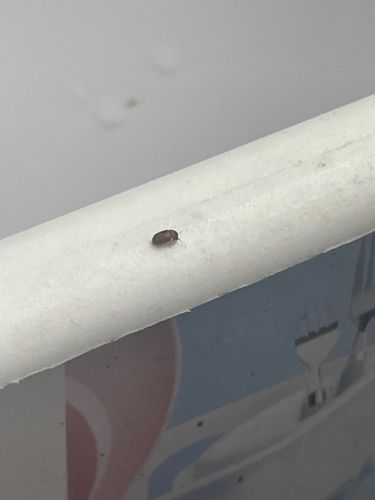Carpet Beetle
Scientific Name: Anthrenus scrophulariae (varied carpet beetle), Attagenus unicolor (black carpet beetle), Trogoderma variabile (warehouse beetle)
Order & Family: Coleoptera, Dermestidae
Size: 2-5 mm (adults)

Natural Habitat
Indoors in homes and museums, feeding on various organic materials; outdoors in nests of birds, rodents, and insects, as well as on flowers.
Diet & Feeding
Adults feed on pollen and nectar; larvae feed on dried animal and plant products including wool, fur, feathers, silk, carpets, clothing, museum specimens, stored foods (grains, cereals, nuts), and dead insects.
Behavior Patterns
Larvae are the damaging stage, seeking dark, undisturbed areas. Adults are attracted to light and might be seen near windows. They undergo complete metamorphosis; life cycle varies from 2 months to a year depending on conditions and species.
Risks & Benefits
Risks: Can cause significant damage to textiles, stored products, and museum collections. Some people may develop skin irritations from contact with their larval hairs (dermatitis). Benefits: In some natural environments, they serve as scavengers, breaking down organic matter.
Identified on: 9/9/2025